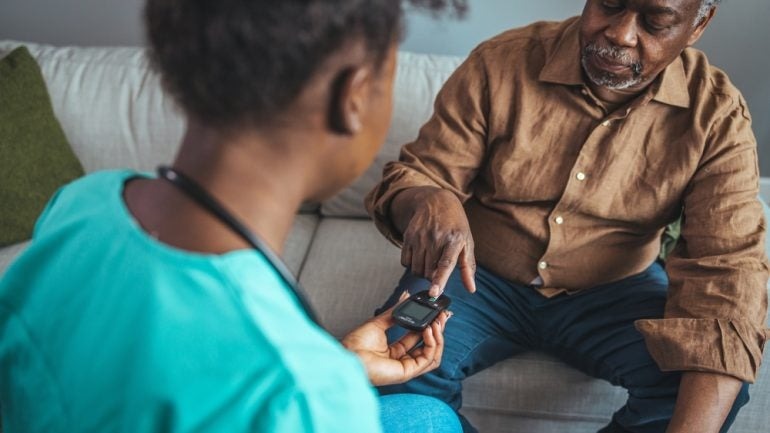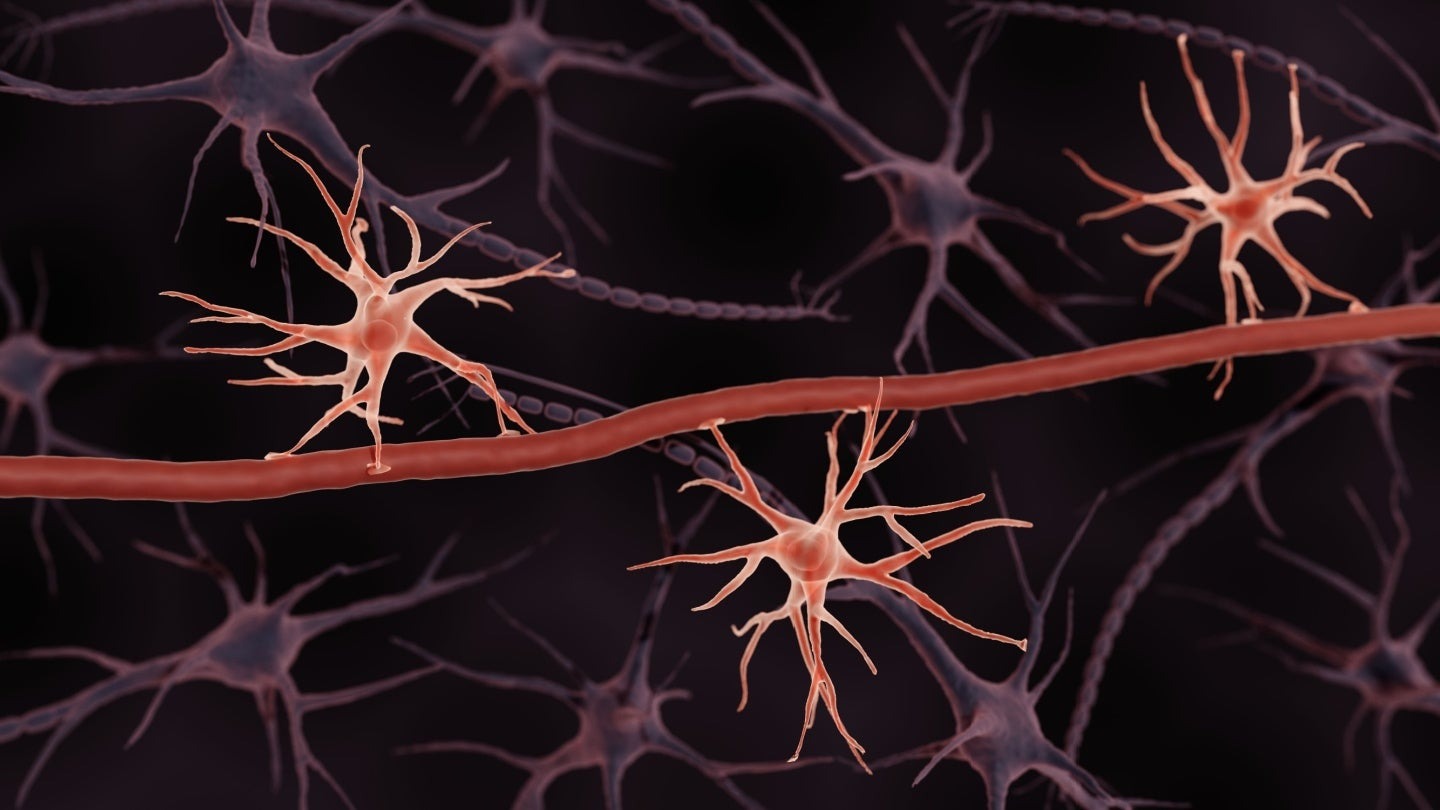Feature
Adapting diabetes clinical trials
Solutions are needed to bridge gaps in communication that can prevent underserved communities from entering diabetes clinical trials, writes Justine Ra.

Experts highlight language and flexibility as key obstacles for the inclusion of underrepresented communities. Credits: Dragana Gordic / Shutterstock
Alack of diversity among participants in clinical trials can exacerbate existing health disparities by limiting how applicable research findings could be for the wider patient population. This is particularly true in the case of type 2 diabetes where a higher prevalence in underserved communities means trial processes should be congruent with the needs and lifestyles of these patients.
In a recent study, researchers from the Feinstein Institutes for Medical Research found that culturally tailored telemonitoring interventions can significantly improve participation and engagement among patients in the Hispanic and Latinx communities with type 2 diabetes.
When telehealth interventions are adapted to accommodate visitations to a participant’s daily schedule and reflect the lifestyle and background of the community being served, diabetes management can become more effective in this community, says Renee Pekmezaris, PhD, a professor at the Institute of Health System Science in Feinstein Institutes for Medical Research. For example, addressing the significant language barrier faced by this patient population is key, she says.
According to the National Diabetes Statistics Report by the Centers for Disease Control and Prevention (CDC), the prevalence of diagnosed diabetes is nearly twice as high in adults of Hispanic origin (11.7%) than in adults who identify as non-Hispanic white (6.9%). As several current studies do not fully reflect the disease demographic, adaptability is needed to establish diverse representation across diabetes clinical trials.
How to reach, not hard to reach
Clinical trials are monopolized by white participants, mostly due to the fact that up until recently, there was very little to encourage trialists to think about the demographic distribution of their population, says Louise Goff, PhD, a professor of Nutrition Science at the Leicester Diabetes Centre.
“We referred to non-white communities as ‘hard to reach’ communities as if they were doing something wrong and making it hard for us to reach them. It is not ‘hard to reach’, but ‘how to reach’; we just need to understand how to reach [the communities],” Goff explains.
Often, many sites serving communities that are historically underrepresented will say that patients are ready to join these studies, says Xoli Belgrave, Senior Director, Head of Clinical Trial Diversity and Inclusion at Parexel. However, despite the eagerness of the patients, larger limitations are centered around language and whether or not a sponsor wants to, or is able to, cover the cost of translation, she elaborates.
The importance of language translation is significant, particularly in some Hispanic dialects where “el mangito” translates to “blood pressure cuff”, while in others it translates to “small mango”, adds Pekmezaris.
Pekmezaris was one of the lead authors on the Feinstein Institutes study that was designed to compare a comprehensive outpatient management (COM) program to a diabetes telehealth management (DTM) program that was adapted to address the needs of the Hispanic and Latinx patients with diabetes. Telemedicine interventions included weekly culturally congruent nursing televisits and management educational videos, as well as daily vital sign monitoring using glucometers, blood pressure cuffs, and digital scales.
The researchers found that mean haemoglobin A1c (HbA1c) values in enrolled participants decreased from 8.32% to 7.55% in the DTM group compared to a drop of 8.32% to 8.07% in the COM group. (Pekmezaris, R., et al. [2024] Clinical Diabetes. doi: 10.2337/cd24-0002). HbA1C levels indicate the blood glucose levels over two to three months and are one of the ways to track the severity of diabetes.
The emphasis on developing and relaying culturally congruent educational videos is also significant, says Pekmezaris. Educational videos are intended for patients to review concepts and understand how to apply them to everyday life, Pekmezaris explains. However, the vast majority of video content is not designed to resonate with the intended community.
“We are not just talking about bigger fonts for diabetic eyes. We are talking about the fact that these videos are talking about burgers and fries when we eat frijoles and tortillas. So, it doesn’t really make sense for us to be doing that,” says Pekmezaris.
There is also a need for expanded screening to reach patients who have undiagnosed diabetes, says Dr. Muhammad Karamat, a consultant physician and honorary professor in Diabetes and Endocrinology at University Hospitals Birmingham.
When patients lack the access to healthcare and screening, a paradox occurs where the diabetes may be more severe, but the patients do not have access to the care needed to alleviate it, says Karamat. Additionally, sometimes a gender disparity makes it more difficult to diagnose diabetes in men, he adds.
Type 2 diabetes is often diagnosed at age 40 years, and women who have gone through pregnancy may gain knowledge of blood sugar levels if they were diagnosed with gestational diabetes, says Karamat. There is good evidence to suggest that when diabetes is diagnosed under age 40 years, it tends to be more severe, he explains. Furthermore, in an undiagnosed population that already lacks access to health care, making diagnoses is more challenging, Karamat elaborates.
Ultimately, it is important to partner with a community and understand the patients’ lived experiences in order to understand why the barriers exist and subsequently break down those barriers, says Goff.
Study designs bar trial entry
The design of the clinical study is another factor influencing participation. For many individuals who work more than one job, participating in a clinical study is an additional demand on their time, travel, and budget, says Belgrave. Goff, who is leading a study to develop a diabetes education program for African and Caribbean communities in the UK, adds that there is often a disconnect between the challenges perceived by the study investigators and those perceived by patient communities.
While study investigators thought the main thing patients would want is culturally concordant diabetes educators, patients instead highlighted the importance of having flexible attendance as to not jeopardize their employment, Goff explains. “We would never have thought that that was the priority if we just sat in our office and tried to come up with these issues,” she adds.
There are also challenges around recruitment in clinical trials because of “very set” criteria that can be challenging for some minority ethnic populations, says Karamat. In addition to the higher prevalence of diabetes in these populations, some minority ethnic populations are at a slightly higher risk for conditions such as diabetes associated with kidney disease or cardiovascular events, says Karamat.
For example, with inclusion criteria around a firm HbA1C cutoff, the populations that often have higher glucose levels and a more severe form of diabetes can automatically be screened out of trial on principle, he adds.
Enrolling participants from underrepresented backgrounds is integral for an effective clinical study, says Karamat. “They [the pharma industry] need some incentives, but they also need to have some restrictions. So, it is important that you go both ways while ensuring that this [diversity] is being implemented in trials,” Karamat explains.
“Day to day, people need to understand what companies live through in order to remain compliant. And the question isn’t whether people should be compliant or not; rather, it is, do people know what they are being asked to be compliant with?”
You shouldn’t need to go into that level of paranoia for a simple supply or manufacturing agreement.
Dr Lattanza

Astrocytes are a type of neural cell that builds the BBB, and Excellio plans to derive exosomes from them to make them even better at targeting the brain. Credit: ART-ur / Shutterstock
Caption. Credit:

Phillip Day. Credit: Scotgold Resources
Total annual production
Australia could be one of the main beneficiaries of this dramatic increase in demand, where private companies and local governments alike are eager to expand the country’s nascent rare earths production. In 2021, Australia produced the fourth-most rare earths in the world. It’s total annual production of 19,958 tonnes remains significantly less than the mammoth 152,407 tonnes produced by China, but a dramatic improvement over the 1,995 tonnes produced domestically in 2011.
The dominance of China in the rare earths space has also encouraged other countries, notably the US, to look further afield for rare earth deposits to diversify their supply of the increasingly vital minerals. With the US eager to ringfence rare earth production within its allies as part of the Inflation Reduction Act, including potentially allowing the Department of Defense to invest in Australian rare earths, there could be an unexpected windfall for Australian rare earths producers.
